Relaxation can be one of the most effective tools to manage your lupus symptoms like fatigue, pain, and stress. Ongoing symptoms of pain and fatigue do not need to be met with alarm. If we can calm ourselves, we can also calm our nervous system, reduce our stress, and give ourselves a chance to find other ways to cope with our fatigue, body aches, sleep problems, stress, and depressed or anxious mood.
“I try to relax, but I can’t or it doesn’t help”
Do you still feel tense even after trying to relax? Resting your physical body (e.g., lying on the couch or watching TV) is partly helpful, but the full relaxation response also involves mental relaxation. The relaxation response occurs when you teach your body and mind how to relax more fully and on command by using active relaxation techniques, such as deep breathing. As you practice these techniques, they will become more natural and help you reach a state of total calm and relaxation.
Click on the sections below to learn about specific relaxation activities to help manage your lupus symptoms. There is also information on how to overcome relaxation barriers and challenges.
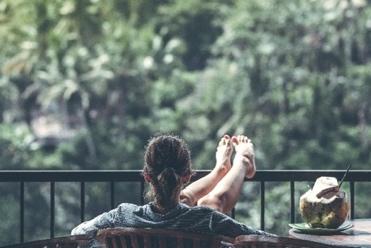
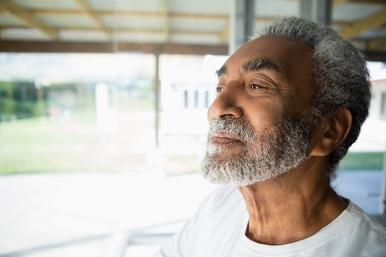
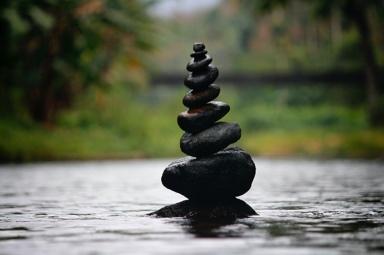
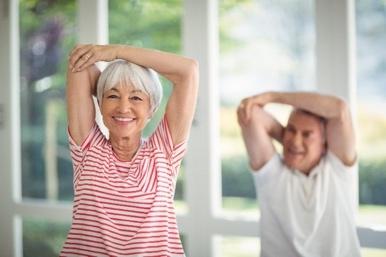


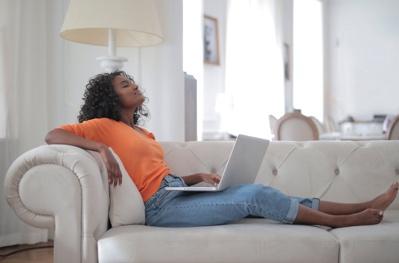
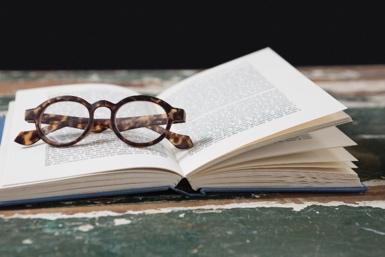
Understand Your Need for Relaxation
Back to topWhen humans face any kind of threat, our bodies respond through something called the “fight-or-flight response”. During the flight-or-fight response the body prepares itself for action. This includes:
- Bringing extra blood flow to muscles
- Increasing heart rate and blood pressure
- Increasing muscle tension
The fight-or-flight response is designed to help us survive danger in rare moments of extreme need. The body was not meant to be this way all the time. However, some things like stress and chronic illness can keep the flight-or-flight response turned on in our bodies. A long-term fight-or-flight response is harmful to our physical and mental well-being. The symptoms of an overly active fight-flight response are extra fatigue, stress, and pain.
We calm our bodies through relaxation strategies. A state of relaxation is the opposite of the fight-or-flight response. Relaxation changes how you physically and mentally manage stress.
What Are Relaxation Benefits?
Back to topRelaxation is a helpful tool for lupus symptoms like fatigue, body aches, sleep problems, stress, and depressed or anxious mood. This is because:
- Tense muscles make body aches worse. Your body naturally protects itself by tensing muscles around an area that hurts or needs protection. When your muscles are tense for too long, your body aches may worsen. Relaxation helps decrease this muscle tension that occurs when you experience pain.
- Relaxation also counters the well-known negative effects of stress on body aches and other physical problems
- Relaxation benefits areas of the brain that sense and reduce pain.
- It is common to feel tense when you feel depressed or anxious. Relaxation helps decrease physical and mental tension that can make depression and anxiety worse.
- Relaxation can help you sleep better. See the Sleep Module for more information.
- Relaxation is a good way to take a break or “time-out” from stressful situations or emotions. It is a helpful activity you can do to take care of yourself.
- People are usually better at planning and problem solving when they feel relaxed compared to when they are stressed.
Try Some Relaxation Strategies
Back to top-
Autogenic Relaxation
Click here for a guided exercise on autogenic relaxation that will help you decrease bodily tension through deep breathing and awareness.
-
Duration: 10 minutes
-
Diminishes physiological arousal
-
Trains the body to calm physiological processes
-
-
Deep Breathing
The following audio is designed to teach you how to breathe deeper and more effectively, which may decrease your anxiety and improve your mood.
-
Duration: 5 minutes
-
Improves the quality of your breathing to help you relax.
-
One of the easiest and most effective relaxation skills
-
-
Guided Imagery
The following audio will guide you through a visualization exercise where you remember a place that you feel fondly about and focus all your attention on that setting.
-
Duration: 6 minutes
-
Uses mental imagery of calm places to induce relaxation
-
Uses all your senses to produce a vivid mental image that distracts you from stress
-
-
Body Scans – Exercise 1
The following clip will guide you through a floor relaxation exercise aimed at decreasing bodily tension.
-
Duration: 6 minutes
-
Mentally scan your body for stress
-
Decreases tension
-
-
Body Scans - Exercise 2
Listen to the audio below for a chair relaxation exercise that will release stress in your body.
-
Duration: 7 minutes
-
Mentally scan your body for stress
-
Decreases tension
-
-
Mindfulness Meditation
The audio below is a guided meditation that will help you focus on the present moment.
-
Duration: 2 minutes
-
Focuses one’s attention on the present moment
-
Allows negative thoughts to flow through one’s mind without evoking stress
-
When we do not attach our minds to negative thoughts, they have less energy, and it is easier to let them go.
-
-
Mini Progressive Muscle Relaxation
The following audio will guide you through a relaxation exercise in which you learn to tense and release different muscles in your body.
-
Duration: 4 minutes
-
A quick technique for achieving the relaxation response
-
Recommended after you have mastered other techniques that take longer
-
Can be more easily applied in real-world settings outside the home
-
Grounding
Back to topGrounding is a relaxation technique that aims to reconnect, or “ground”, you in the present moment. Grounding is especially useful for instances of anxiety and panic, as it can help alleviate racing thoughts. The ultimate goal of grounding is to get you out of a distressing headspace and re-engaged in your body and surrounding environment. Grounding is a very personal relaxation technique. A grounding strategy that works for one person may not work for another. It may take some time to figure out which of these strategies resonate with you.
Physical Grounding: Relaxation techniques that involve physical movement or interaction with physical objects
Brrrr!
What to do: Hold an ice cube and focus on its temperature and texture. Toss it from hand to hand, paying attention to the sensations this brings. Rub the ice cube on your inner wrists, upper arms, forehead, and neck. If you want, put a fresh ice cube in your mouth as well.
Why it works: The cold, shocking sensation caused by holding an ice cube diverts you away from your panic response. Adjusting to cold temperatures also stimulates the parasympathetic nervous system, which acts against the “fight or flight” panic response by slowing heartrate and breathing.
Alternatively: Take a cold shower, hold an ice pack to your chest and neck, or swim in cool water. If you have trouble handling the cold, but want a shocking sensation that mimics holding an ice cube to help divert your attention from your anxious thoughts, try sucking on a lemon or smelling a strong peppermint scent.
Zzzzzz
What to do: Lie under a weighted blanket, ideally weighing approximately 10% of your body weight.
Why it works: The sensation of lying beneath a weighted blanket is warm and secure, which can help settle the nervous system, much like how tightly swaddling a newborn can produce calming effects.
Alternatively: Lie under a heavy comforter or let your dog lie on your chest! You can also put on a tight beanie or heavy sweatshirt, which can partially mimic the warm secure feeling of a weighted blanket.
Mental Grounding: Relaxation techniques that involve cognitive exercises
5-4-3-2-1
What to do: Find a comfortable seated position. Close your eyes and take a couple slow, deep breaths. Then, open your eyes and, as you become attuned to your immediate surrounding environment, search for the following:
-
Five things you can see? Look for tiny details. The ridged ceiling, veins on a leaf.
-
Four things you can feel? Notice the weight of your clothes, the sun on your skin.
-
Three things you can hear? Tune into sounds in the distance. Traffic, a ticking clock.
-
Two things you can smell? Search for scents in the air. Mowed grass, an unlit candle.
-
One thing you can taste? Run your tongue around your mouth, or pop a mint or candy.
Why it works: This exercise encourages the anxious mind to turn outwards and focus on the external, stable, physical environment. Working through each of the five senses facilitates a sense of groundedness in the body and safety in the space. This exercise also helps transform racing thoughts into a more concrete, structured thinking pattern.
Alternatively: If this exercise feels too complicated in the moment, here are simpler options:
-
Look around the room and try to find everything in the shade of blue
-
Locate and name as many different textures that you can see (ex. wooden, fluffy, smooth)
Category is…
What to do: Find a comfortable seated position. Take a couple slow, deep breaths. Then, pick a category from the following list that resonates with you:
-
Foods
-
Books
-
Films
-
Cereals
-
Sports teams
-
Celebrities
After you pick a category, think of an example in this category that corresponds with each letter of the alphabet. For example, for the category “Books,” you might think “Anna Karenina, Babe, Call Me By Your Name, etc.”
Why it works: This activity aims to turn attention away from anxious thoughts and onto a structured mental exercise. Combined with deep breathing, it should aid in reconnecting with the present moment.
Alternatively: If this activity feels too complicated, try picking a large number and counting backwards from there. Alternatively, pick a large number and count upwards from one.
How to Practice Relaxation Often
Back to topPracticing relaxation often, even when you feel well, can help improve your symptoms and reduce anxiety. The more you use relaxation, the more you will benefit from it. Here are some tips for regular relaxation practice:
- Try to practice a relaxation technique once per day for 10-30 minutes.
- Even practicing for five minutes a day can help you learn this skill, and using it becomes more and more automatic. This amount of time is enough to achieve benefits from the practice.
- It is best to practice relaxation when your symptoms are mild to moderate, not severe.
- Try to find a calm and quiet place to relax within your home or living space. Dedicating a special place in your life for this practice can make this a habit, much like brushing your teeth and getting ready for the day.
- Find a time of day that works best for you. Many individuals find that doing this practice first thing in the morning or at the end of the day, are nice times to integrate this into your routine.
- Use guided recordings in your practice
- The more you practice, the more this tool will benefit you when your symptoms are worse.
- Use a journal to log when you practice. You may also rate your stress level before and after practicing, using a 0-10 rating scale (0 = not at all stressed to 10 = worst stress/discomfort imaginable).
Overcome Barriers to Relaxation
Back to topIt might seem counterproductive to spend time practicing relaxation when life is so busy. However, relaxation may improve your pain, stress, and ability to focus on what you are doing. Below are some common barriers people face when learning to control their body’s relaxation response.
-
“I don’t have time to practice.”: Your ability to relax can improve with regular practice. Start by practicing for just 5 minutes each morning or evening and simply be mindful of your breathing, something that is always with you and available for practice. With time, it may become easier for you to relax as you learn how to do it. You may start looking forward to your “relaxation time.”
-
“I want to relax, but other people need me.”: Sometimes, other people need you, leaving you little or no time for yourself. Your time is precious and something that you have control over. Explain to them that having time for yourself to relax may help reduce your pain, raise your energy level, and ease your stress. To protect this time, you may want to talk with them about how much they can ask of you and when. It may feel selfish at first, but it is important that you make time to take care of yourself. You must learn to help yourself, before you can aid others. The Communication Module may help you with this.
-
“I’m not sure I’m relaxing the right way.”: If the approaches discussed here aren’t working for you, there are other books, tapes, and classes that can help you learn more ways to relax. In addition to practicing some form of relaxation most days, a good way to tell if you are being effective is to write down what you are doing.
-
“I don’t feel comfortable when I relax.”: If you are not used to sitting in silence, it’s possible you may become anxious or more aware of any bodily discomfort at first instead of feeling calm and rested. This new awareness of your body and mind is normal, especially if you’re used to feeling tense. A small number of people may get very emotional and upset when they try certain relaxation techniques. If this happens to you, feel free to take a pause in your practice. If possible, talk with your healthcare provider about what you are feeling.
-
“I have a hard time sitting still.”: For some people, it is hard to sit or lie still when they are first practicing relaxation. If this is true for you, you might try a movement relaxation exercise. This might include doing some gentle stretches and focusing on your breathing, or practicing deep breathing while on a slow, relaxing walk. As you get more and more comfortable with your relaxation practice, you can incorporate new elements, such as stillness.
-
“It’s hard making relaxation a priority.”: For the relaxation response to work, you need to practice regularly. If you are having problems practicing, think about the benefits of relaxation for you. But go easy on yourself. It may take practice to make relaxation a regular part of your life.
Videos on Relaxation
Back to topFurther Reading and Other Resources
Back to topThere are many additional resources available to help you find a relaxation practice that works well for you. Consider the following options:
-
Meditation or relaxation apps are available for free or for purchase to download to your smartphone or other device. Some examples include Headspace, Calm, MyLife, Sanvello, and Insight Timer
-
There are many books that provide more information on relaxation strategies and tips for success. Some examples:
-
Check out relaxation resources at your local library. Your library may have relaxation CDs or DVDs in addition to books about relaxation or meditation.
-
If you work at a desk job, consider setting a reminder on your phone or computer to practice deep breathing a few times a day.




